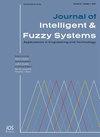基于LSTM混合深度学习模型的残差神经网络阿尔茨海默病检测
IF 1
4区 计算机科学
Q3 COMPUTER SCIENCE, ARTIFICIAL INTELLIGENCE
引用次数: 0
摘要
阿尔茨海默病的早期检测对于促进及时干预和提高向患者提供的护理质量至关重要。本研究提出了一种诊断阿尔茨海默病的新策略,该策略利用复杂的采样方法与深度学习的混合模型相结合。我们使用分层抽样、ADASYN(自适应合成抽样)和聚类-中心点方法来确保在模型训练期间阿尔茨海默病和非阿尔茨海默病病例的平衡表示,以满足临床数据集中数据分布不平衡所带来的问题。这使我们能够解决临床数据集中数据分布不平衡所带来的挑战。将残差神经网络(ResNet)单元与残差神经网络(ResNet)单元相结合,构建了强混合体系结构。该体系结构充分利用了ResNet的特征提取能力和LSTM捕获时间依赖关系的能力。研究结果表明,该模型在准确性、灵敏度和特异性方面优于传统的机器学习方法和单模型架构。这种混合深度学习模型在识别阿尔茨海默病的早期指标方面表现出了卓越的能力,而且准确率很高本文章由计算机程序翻译,如有差异,请以英文原文为准。
Alzheimer’s disease detection using residual neural network with LSTM hybrid deep learning models
Early Alzheimer’s disease detection is essential for facilitating prompt intervention and enhancing the quality of care provided to patients. This research presents a novel strategy for the diagnosis of Alzheimer’s disease that makes use of sophisticated sampling methods in conjunction with a hybrid model of deep learning. We use stratified sampling, ADASYN (Adaptive Synthetic Sampling), and Cluster- Centroids approaches to ensure a balanced representation of Alzheimer’s and non-Alzheimer’s cases during model training in order to meet the issues posed by imbalanced data distributions in clinical datasets. This allows us to solve the challenges posed by imbalanced data distributions in clinical datasets. A strong hybrid architecture is constructed by combining a Residual Neural Network (ResNet) with Residual Neural Network (ResNet) units. This architecture makes the most of both the feature extraction capabilities of ResNet and the capacity of LSTM to capture temporal dependencies. The findings demonstrate that the model is superior to traditional approaches to machine learning and single-model architectures in terms of accuracy, sensitivity, and specificity. The hybrid deep learning model demonstrates exceptional capabilities in identifying early indicators of Alzheimer’s disease with a high degree of accuracy, which paves
求助全文
通过发布文献求助,成功后即可免费获取论文全文。
去求助
来源期刊

Journal of Intelligent & Fuzzy Systems
工程技术-计算机:人工智能
CiteScore
3.40
自引率
10.00%
发文量
965
审稿时长
5.1 months
期刊介绍:
The purpose of the Journal of Intelligent & Fuzzy Systems: Applications in Engineering and Technology is to foster advancements of knowledge and help disseminate results concerning recent applications and case studies in the areas of fuzzy logic, intelligent systems, and web-based applications among working professionals and professionals in education and research, covering a broad cross-section of technical disciplines.
 求助内容:
求助内容: 应助结果提醒方式:
应助结果提醒方式:


